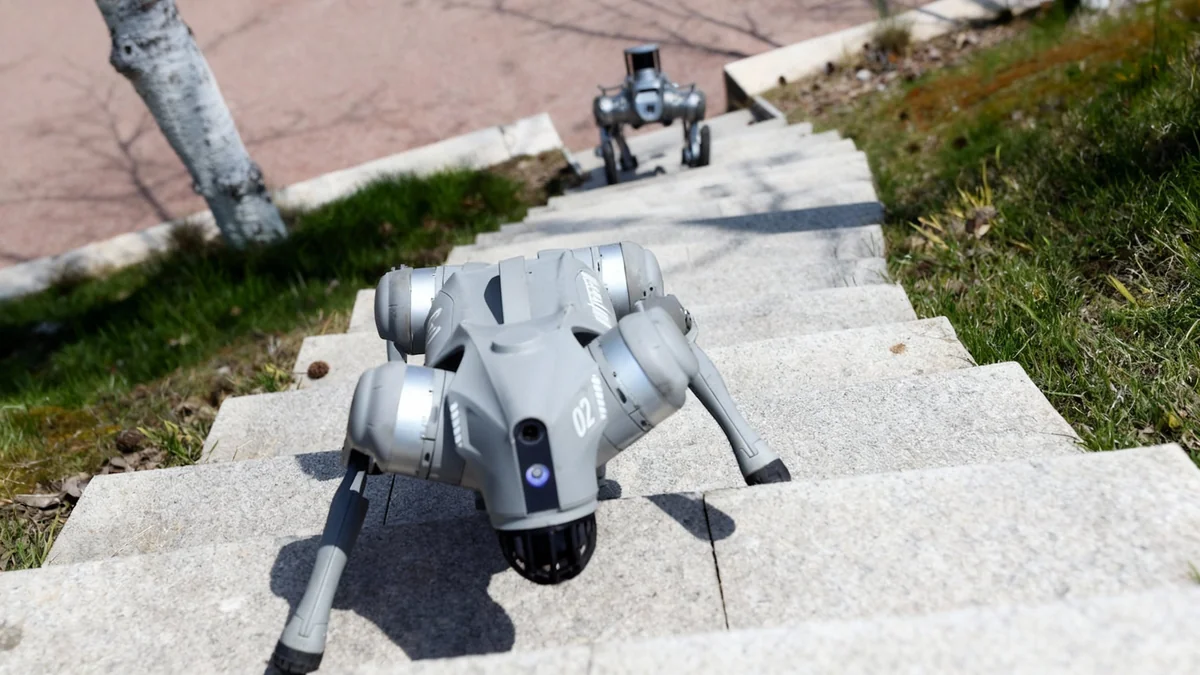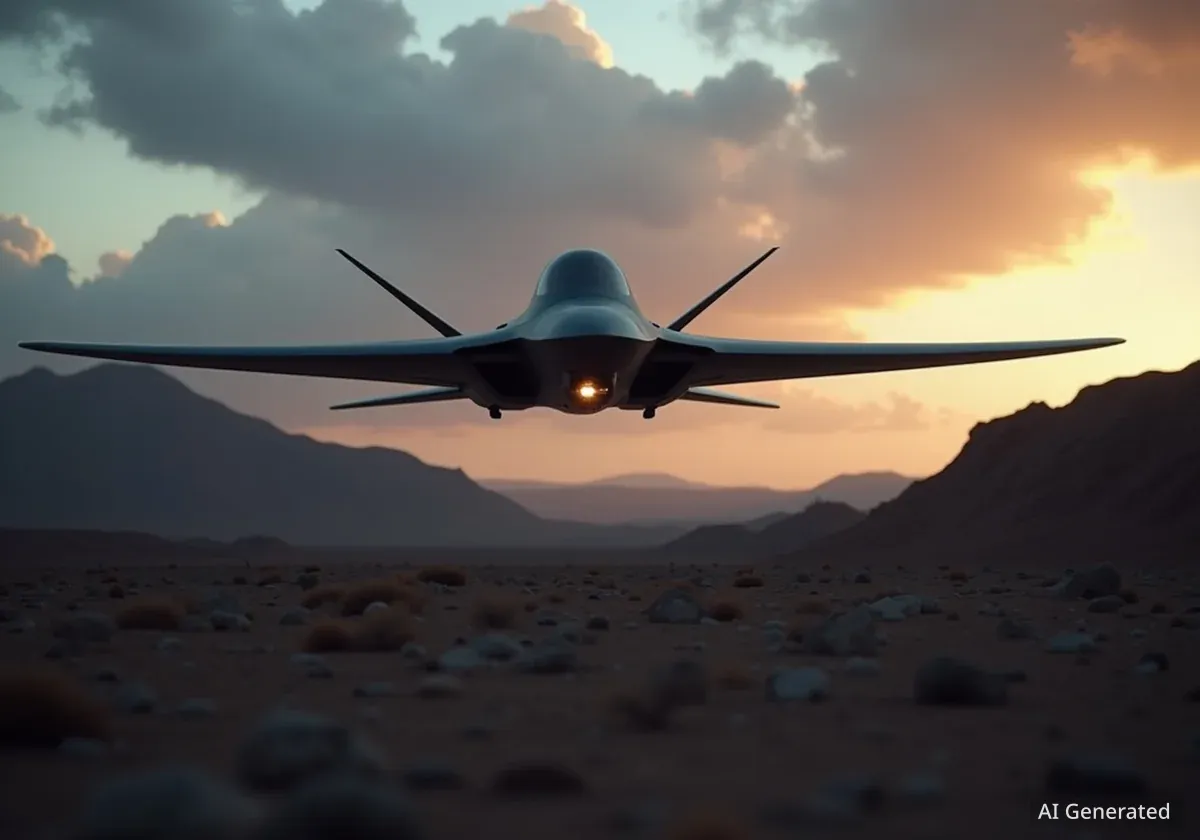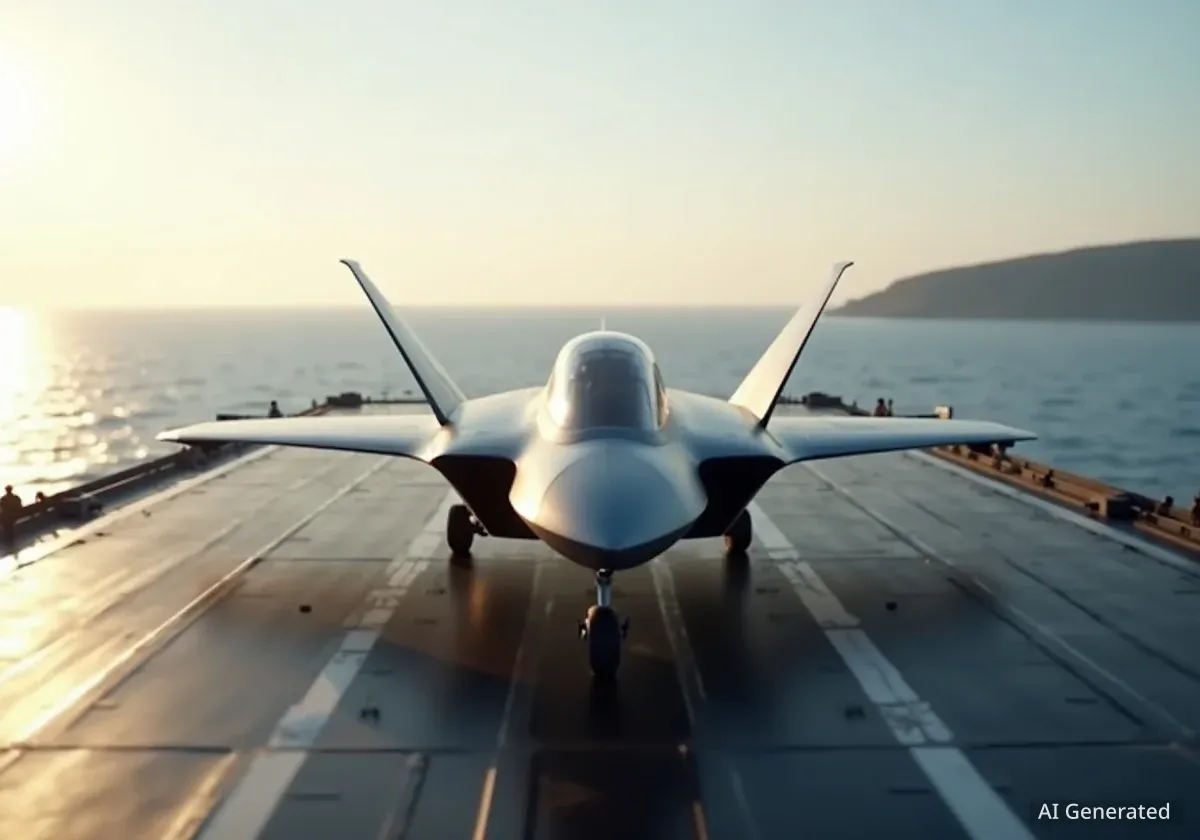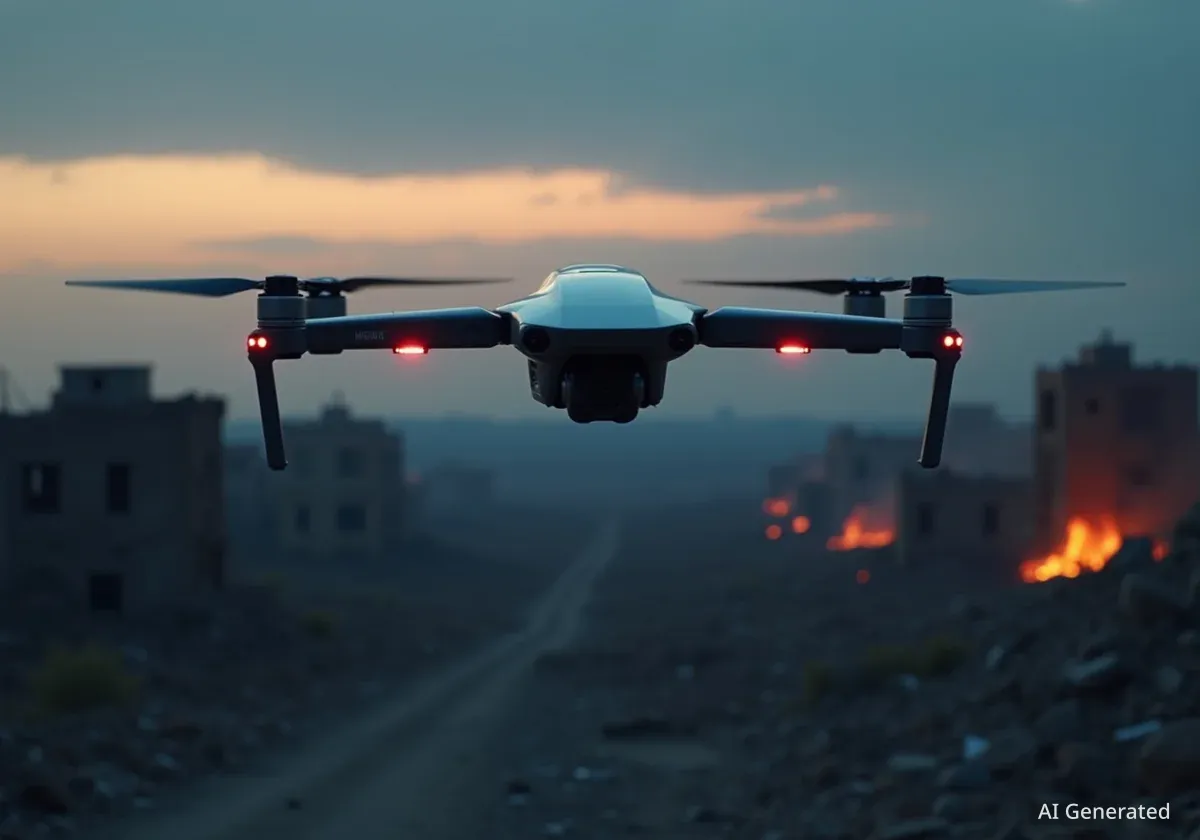China is systematically integrating advanced artificial intelligence into its military capabilities, with state-owned defense firms and research institutes increasingly relying on domestically developed AI models like DeepSeek. This strategic push aims to enhance autonomous combat operations, target recognition, and battlefield decision-making, mirroring efforts by other major global powers.
Key Takeaways
- China's military is extensively using DeepSeek AI for autonomous combat support and planning.
- Norinco's P60 military vehicle, revealed in February, features DeepSeek AI for autonomous operations.
- The People's Liberation Army (PLA) continues to seek and use Nvidia chips, despite U.S. export controls.
- There is a growing shift towards using Huawei AI chips and other domestically produced hardware.
- AI is being applied to robot dogs for scouting, drone swarms for target tracking, and advanced war game simulations.
DeepSeek's Central Role in Military Innovation
In February, China's state-owned defense giant Norinco unveiled the P60, a military vehicle capable of autonomous combat-support operations at speeds of 50 kilometers per hour. This vehicle is powered by DeepSeek, an artificial intelligence model considered a flagship of China's tech sector.
Communist Party officials have highlighted the P60's release as a prime example of how Beijing is leveraging DeepSeek and AI to advance its military technology. This development comes as leaders in both China and the United States urge their militaries to prepare for potential conflicts.
Fast Fact
A DeepSeek-powered system developed by Xi'an Technological University researchers could assess 10,000 battlefield scenarios in just 48 seconds. A conventional team would require 48 hours for the same task.
Algorithmic Sovereignty and Domestic Hardware
The People's Liberation Army (PLA) and its affiliates are increasingly favoring DeepSeek models, with a dozen tenders filed this year referencing their use. In contrast, only one tender mentioned Alibaba's Qwen, a significant domestic competitor.
This preference for DeepSeek aligns with China's broader objective of achieving "algorithmic sovereignty." This strategy aims to reduce dependence on Western technology and strengthen control over critical digital infrastructure.
"DeepSeek has willingly provided, and will likely continue to provide, support to China's military and intelligence operations," a State Department spokesperson noted, underscoring Washington's concerns about the collaboration.
Expanding Applications of AI on the Battlefield
China's military is exploring a wide range of AI-powered applications, from advanced reconnaissance to complex combat simulations. Documents indicate interest in robot dogs that scout in packs, drone swarms that autonomously track targets, and visually immersive command centers.
In November 2024, the PLA issued a tender for AI-powered robot dogs designed to scout for threats and clear explosive hazards. While it is unclear if this specific tender was fulfilled, China has previously deployed armed robot dogs from AI robotics manufacturer Unitree in military drills.
Context: U.S. Export Controls
In September 2022, the U.S. Commerce Department banned exports to China of Nvidia's popular A100 and H100 chips. These restrictions aimed to curb China's access to advanced semiconductor technology for military applications.
AI for Enhanced Military Planning
Research papers, patents, and procurement records from the past two years show how the PLA and associated entities are leveraging AI to improve military planning. This includes developing technology for rapid analysis of satellite and drone imagery.
Landship Information Technology, a Chinese company integrating AI systems into military vehicles, stated in a February white paper that its Huawei chip-based technology can quickly identify targets from satellite imagery. It can also coordinate with radars and aircraft to execute operations, significantly reducing the time from target identification to operational execution.
The Enduring Role of Nvidia Chips and Domestic Alternatives
Despite U.S. export controls, the Chinese military continues to seek and utilize Nvidia chips. Procurement records and patents filed as recently as June show military-linked research institutes using models like the A100.
Nvidia spokesman John Rizzo clarified that while the company cannot track individual resales of previously sold products, "recycling small quantities of old, second-hand products doesn't enable anything new or raise any national security concern." He also emphasized that using restricted products for military applications would be a nonstarter without proper support.
- 35 applications referencing Nvidia A100 chips were identified in patent filings from the PLA's National University of Defense Technology (NUDT) and the "Seven Sons" universities over the past two years.
- In the same period, these entities filed 15 patents related to AI applications citing Huawei Ascend hardware.
The Rise of Huawei and Domestic Processors
There is a noticeable increase in the Chinese military's use of contractors claiming to exclusively use domestically-made hardware, particularly Huawei AI chips. This shift aligns with Beijing's public campaign to encourage the use of China-made technology by domestic firms.
Sunny Cheung, a fellow at the Jamestown Foundation, observed this trend after analyzing several hundred tenders from the PLA Procurement Network this year. Chinese defense contractors like Shanxi 100 Trust Information Technology openly promote their reliance on domestically produced components, such as Huawei's Ascend chips, which enable AI models to operate.
Autonomous Weapons and Ethical Considerations
The documents reviewed suggest significant investment in increasingly autonomous battlefield technology. Two dozen tenders and patents reveal efforts to integrate AI into drones for autonomous target recognition, tracking, and formation flying with minimal human intervention.
Beihang University, a prominent institution for military aviation research, is reportedly using DeepSeek to enhance drone swarm decision-making. Their focus is on targeting "low, slow, small" threats, which is military shorthand for drones and light aircraft.
Chinese defense leaders have publicly committed to maintaining human control over weapons systems. This commitment comes amid growing international concern that a conflict between Beijing and Washington could lead to the unchecked deployment of AI-powered munitions. The U.S. military is also heavily investing in AI, aiming to deploy thousands of autonomous drones by the end of 2025 to counter China's numerical advantage in unmanned aerial vehicles.





